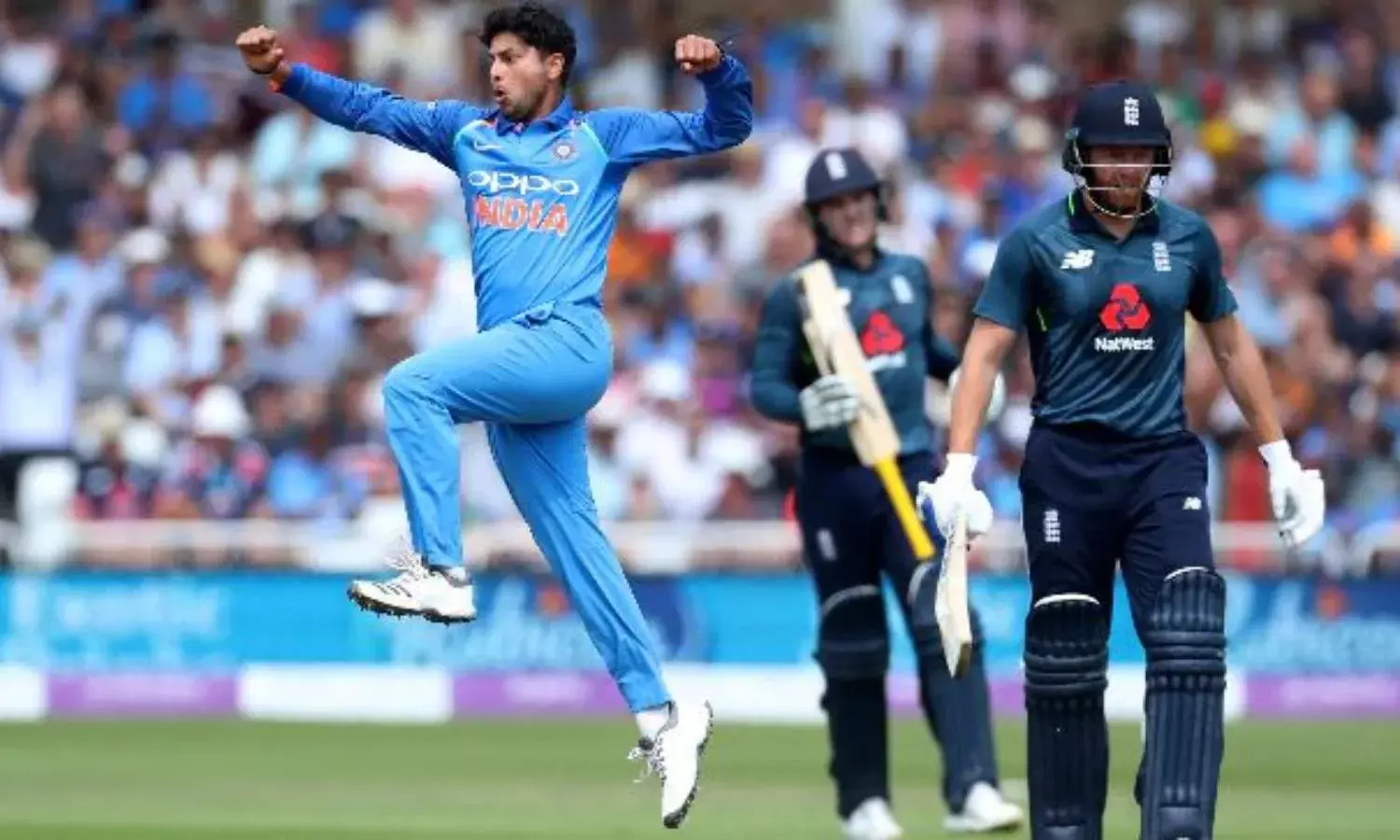England, Merlyn and Kuldeep
England, Merlyn and Kuldeep
“Can bowl any ball known to man” is how Henry Pyror promoted his toy, the Merlyn, to the English dazed by the wizardry of Shane Warne. Wrist spinners are common place now but left- arm wrist spinners, called Chinaman bowlers, are a rarity. In County Cricket, not a single Chinaman bowler has taken more than 18 wickets in the last decade. It is, therefore, a given that England can barely practice against Kuldeep Yadav with a lesser effective club replacement.
What they do have is the Merlyn, a bowling machine which was used in the 2005 Ashes series to help counter Shane Warne. How effective the machine was is debatable for Warne finished the series with 40 wickets, the most by any bowler in either side. But England won the Ashes for the first time since 1986/87 and for the first time at home in two decades.
It was only understandable that an emergency call for Merlyn was made when Kuldeep wrecked havoc in the first T20I between India and England this summer.
Left-arm wrist-spinners seem quite hard to come by,” said Jos Buttler, who had saved face for England then with a 69 but was dismissed by Kuldeep. “One thing we can do is with Merlyn, to replicate the angle. It’s a very good machine to get used to that. But it was the first time some guys have faced Kuldeep and it may take one or two games, plus video.”
Merlyn wasn't used in the build-up to the series. A team which had racked up twenty 300-plus scores since the 2015 World Cup was believed to have enough firepower to counter the Indian spinners on English wickets even if they did manage to break through with a few.
Yet, when Kuldeep unleashed his fury, England were blown away, so much so that the idea of Merlyn came quickly to some genius in the dressing room and was vehemently promoted as a last ditch option to salvage the clueless batsmen from the artistry of the Chinaman.
“He’s a very good bowler. It’s now down to the guys to gain an understanding. You see it a lot in international cricket that guys burst on to the scene and then people get a handle on them. It’s getting used to the angle as wrist spin is usually right-arm. We know we are a lot better than we showed during that little phase of the game,” Buttler had expressed acknowledging Kuldeep's craft while defending his own men. Chris Jordan echoed his sentiments when he pressed that .erlyn should make a difference. “Merlyn is a good addition. Especially when you don't have someone to replicate bowling left-arm wrist spin,”
Yet, at Trent Bridge, the venue which had seen this England batting rack up a record 481, England were blinded by Kuldeep yet again, this time crumbling akin to an over-crisp cookie. The very same English batsmen who had run amok against Australia appeared uncertain in footwork and defence.
Ben Stokes ambled along to a half-century in over hundred balls, thecond slowest in ODIs since 2010. England weren't poor. They were so bad that despite scoring a decent amount of runs against the other bowlers, they came apart against Kuldeep. Bear in mind that this is an Indian ODI line-up without Bhuvneshwar Kumar and Jasprit Bumrah, two of the most influential bowlers in ODIs for the visitors.
They made 268, largely due to efforts from Buttler,Ali and Rashid towards the end. But where exactly did England falter? Weren't they prepared for Kuldeep Yadav and his magic? Hadn't they spent enough time with Merlyn.
The easiest answer, one which they ought to have figured out themselves, is that Merlyn wasn't the right way to replicate Kuldeep in the nets. Since the 2015 World Cup, England average 60.45 runs per dismissal against wrist spin, the best by any team after India, as shown by CricViz. Against Kuldeep, it comes down to 4.16!
https://twitter.com/CricProf/status/1017708675132219392?s=19
They failed to attack Kuldeep, playing just 30% of attacking shots against him. This was primarily because they aimed to read him off the pitch as the Merlyn thought them. The bowling machine sure stayed true to its promise of replicating any ball in cricket but batsmen were looking at a hole with a ball coming out of instead of a hand. This meant that they were forced to read the turn off the pitch and the practice was replicated in the match against Kuldeep.
As several experts would testify, the best way of playing spin is reading off the hand of the bowler for it gives a clear idea about the kind of delivery and enough time to manufacture shots. When England failed to read off the hand, they were over dependant on Kuldeep pitching it short. The moment it was fuller, they had little time to adjust to the turn and play a shot, resulting in a low attacking percentage. As England defended more, Kuldeep attacked more and grew in confidence, so much so that he ripped them apart in a manner in which no spinner had done in the country in ODIs. Merlyn out already?





